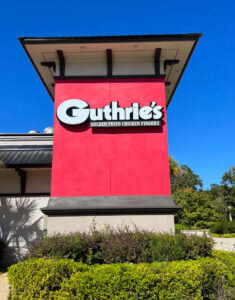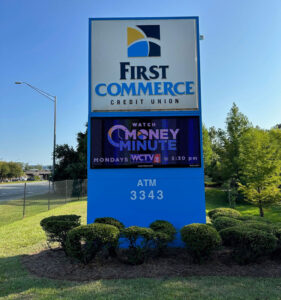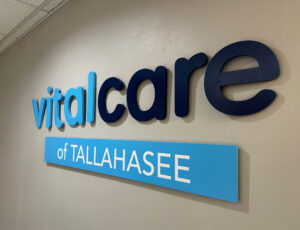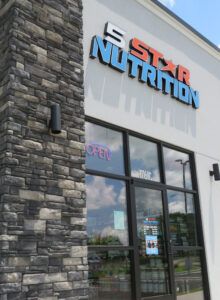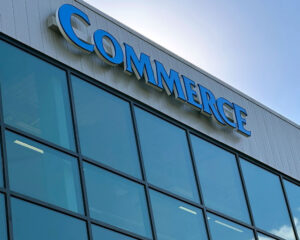Routed Signs are rapidly gaining popularity as a means of creating eye-catching and durable signage for businesses, organizations, and events. Using a computer-controlled router, designs and lettering are cut into a variety of materials, such as wood, metal, and plastic. This process allows for a high level of customization and versatility, making routed signs a popular choice for a wide range of applications.
Routed Signs are rapidly gaining popularity as a means of creating eye-catching and durable signage for businesses, organizations, and events. Using a computer-controlled router, designs and lettering cut into a variety of materials, such as wood, metal, and plastic. This process allows for a high level of customization and versatility, making routed signs a popular choice for a wide range of applications. In this article, we will provide a detailed overview of routed signs, exploring the reasons why clients choose routed signs and the benefits they offer. We will take an in-depth look at the process of making a routed sign, from the initial design phase to installation, and discuss the materials and tools required.
Whether you are a small business owner looking for a new sign, or an event planner in need of eye-catching event signage, this article will provide valuable insights into the world of routed signs. So, let’s dive into the world of routed signs and discover everything you need to know to create the perfect signage for your needs.
Reasons for Choosing a Routed Sign
Clients may choose routed signs for a variety of reasons, including the high level of customization they offer. With routed signage, clients can create unique designs, logos, and lettering that accurately represent their brand and message. This allows for a greater level of brand recognition and can help businesses stand out from the competition. Additionally, routed signs are durable and can withstand harsh weather conditions, making them ideal for outdoor use. The materials used in routed signs often weather-resistant and designed to last for years without needing frequent repairs or replacements, saving clients both time and money. Designed with a three-dimensional effect, routed signs add depth and dimension to the sign, and making it stand out from other types of signs. This can make routed signs more visually appealing and attention-grabbing than flat signs, further increasing their effectiveness in conveying a message. Furthermore, routed signs have a professional and polished look that can help businesses and organizations make a positive impression on potential customers. Made in a variety of materials routed signs are versatile and suitable for a wide range of applications. This flexibility allows for greater creativity in sign design and customization to fit any size or shape.
Process for Making a Routed Sign
The process of making a routed sign involves several steps, from the initial design phase to the final installation. It is essential to follow a detailed process to ensure that the final product meets the client’s specifications and is of the highest quality. In this section, we will provide an overview of the process for making a routed sign and highlight the different steps involved. Here is a list of the steps involved in creating a routed sign:
- Design: The client provides the design or artwork they want routed, which can include custom graphics, logos, and lettering. The design should be a high-resolution digital file, ideally in vector format.
- Material: There is a variety of materials, including wood, metal, plastic, and foam that routing is preformed on.
- Preparation: You must prepare the material before routing can begin. This may involve sanding, priming, or painting the material, depending on the client’s preferences.
- Routing: Guided by a computer, that reads the digital file created from the design the router cuts the graphic into the substrate.
- Finishing: After the routing is complete, the sign is cleaned and prepared for installation. This may involve painting or finishing the sign, as well as attaching any necessary mounting hardware.
- Installation: Once it’s time for installation. The sign is installed in a variety of locations, such as a storefront or outdoor event.
Benefits of Routed Signs
Routed signs offer many benefits to clients. Customization is one of the most significant benefits of routed signs. Clients can create unique designs, logos, and lettering that accurately represent their brand and message. Durability is another benefit of routed signs. When made from durable materials the signs can withstand harsh weather conditions, making them ideal for outdoor use. Dimensionality is a benefit of routed signs as well. Designed to have a three-dimensional effect the sign adds depth and dimension to the sign and making it stand out from other types of signs. Professionalism is another benefit of routed signs. They have a professional and polished look that can help businesses and organizations stand out from the competition. Versatility is also a benefit of routed signs as they are made in a variety of materials, including wood, metal, plastic, and foam. This versatility makes them suitable for a wide range of applications.
Conclusion
Routed signs are a versatile and effective way to create eye-catching and durable signage. They offer numerous benefits, including high levels of customization, durability, and dimensionality. The process of making a routed sign involves several steps, including design, material selection, preparation, routing, finishing, and installation. By following a detailed process, businesses and organizations can ensure that their routed sign meets their specific needs and is of the highest quality. Whether you’re a small business owner looking for a new sign or an event planner in need of eye-catching event signage, routed signs offer a flexible and effective solution. With their durability, versatility, and professional look, routed signs are sure to make a lasting impression on your customers, visitors, and guests. So, consider routed signs for your next signage project and take advantage of their numerous benefits.

